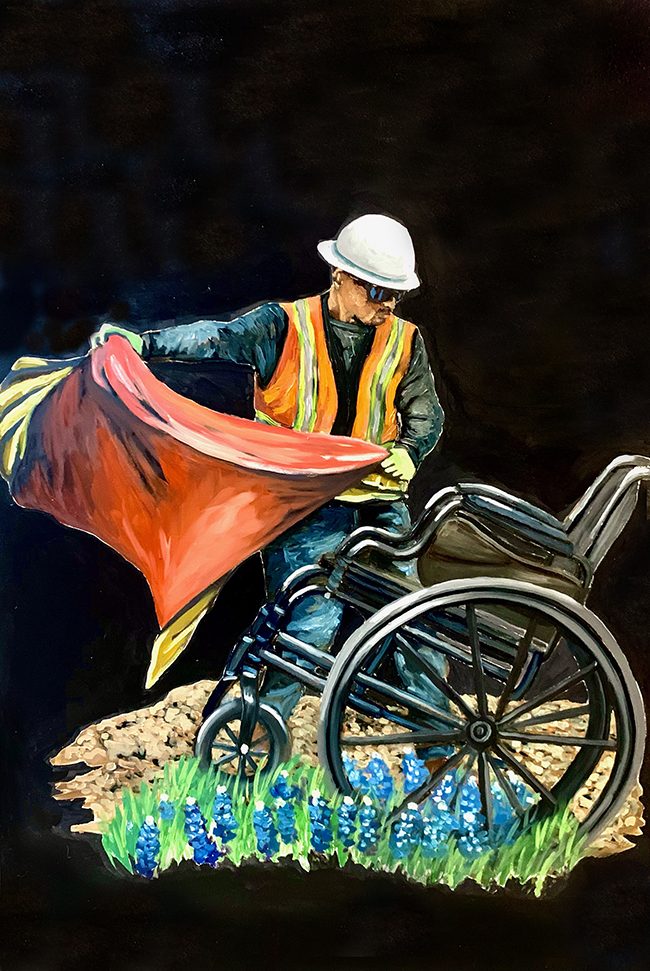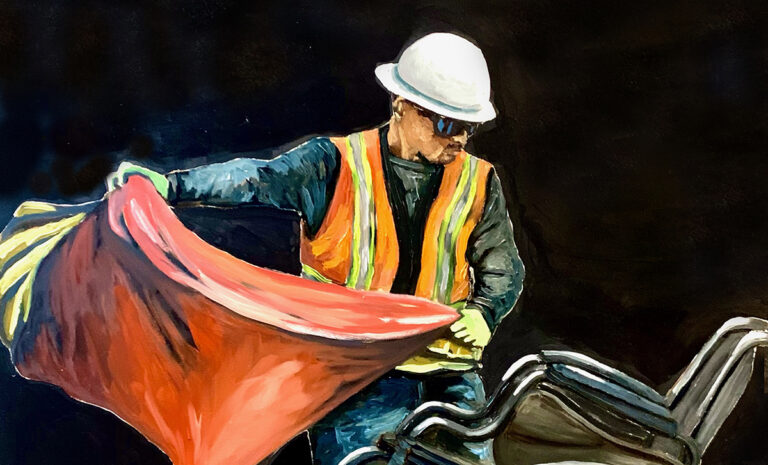Augustine Chavez, an artist based in San Marcos, Texas, focuses on tackling one of the most contentious issues in contemporary American society: the treatment of undocumented immigrants. Through his diverse body of work, which includes painting, sculpture, photography, and installations with concrete and found objects, Chavez gives a voice to those often marginalized and overlooked.

Chavez’s work is deeply influenced by the everyday political rhetoric surrounding the deportation of undocumented immigrants. His art advocates for these individuals, showcasing their contributions to society and challenging the negative stereotypes that often surround them. By highlighting their role in building and maintaining infrastructure, Chavez provides a stark contrast to the common portrayal of undocumented immigrants as criminals.
One of Chavez’s pieces is “Toro Rasquache.” This painting delves into the struggles undocumented individuals face daily, not just from the perilous jobs they undertake but also from the relentless political rhetoric and laws like SB4. Chavez’s inspiration for this piece harks back to his childhood memories. He recalls visiting relatives and noticing the ubiquitous black velvet paintings of matadors and bulls in Mexican homes. These paintings, known as “Rasquachismo Art,” stem from the Aztec word “Rasquache,” meaning the lowest of the low. Although the term carries negative connotations, Chavez reclaims it in his work.
In “Toro Rasquache,” Chavez reinterprets the traditional matador and bull motif to reflect the contemporary struggle of undocumented workers. Here, the construction worker stands as the matador, constantly dodging the harmful political rhetoric symbolized by the bull. The inclusion of bluebonnets, the state flower of Texas, grounds the painting in Chavez’s home state, while the wheelchair representing the Governor of Texas adds a layer of political commentary. Through this painting, Chavez not only critiques the existing power structures but also elevates the dignity and resilience of undocumented workers.
Chavez’s approach to art is both poignant and practical. He uses his platform to shed light on the harsh realities faced by undocumented immigrants, countering the often dehumanizing narratives perpetuated by political discourse. His use of concrete and found objects is particularly symbolic, as these materials represent the physical labor and creativity of undocumented workers in building and shaping the American landscape.
In addition to his visual work, Chavez is deeply involved in community advocacy. He collaborates with local organizations to support immigrant rights and often participates in public art projects that address social justice issues. His art serves as a bridge between different communities, fostering understanding and empathy through visual storytelling.
Chavez’s work is a testament to the power of art as a tool for social change. By highlighting the contributions and struggles of undocumented immigrants, he challenges viewers to reconsider their preconceptions and recognize the humanity in every individual. His art is not just a reflection of his personal experiences and political views but a call to action for a more inclusive and just society.
In conclusion, Augustine Chavez’s art is more than just a creative expression; it is a beacon of advocacy and a testament to the resilience of the human spirit. By bringing the stories of undocumented immigrants to the forefront, he not only honors their contributions but also calls for a broader societal change. Through his paintings, sculptures, and installations, Chavez continues to inspire and challenge us to look beyond the headlines and see the individuals who make up our communities. His work reminds us that behind every political debate are real people whose lives and stories deserve to be seen and heard.
4o

